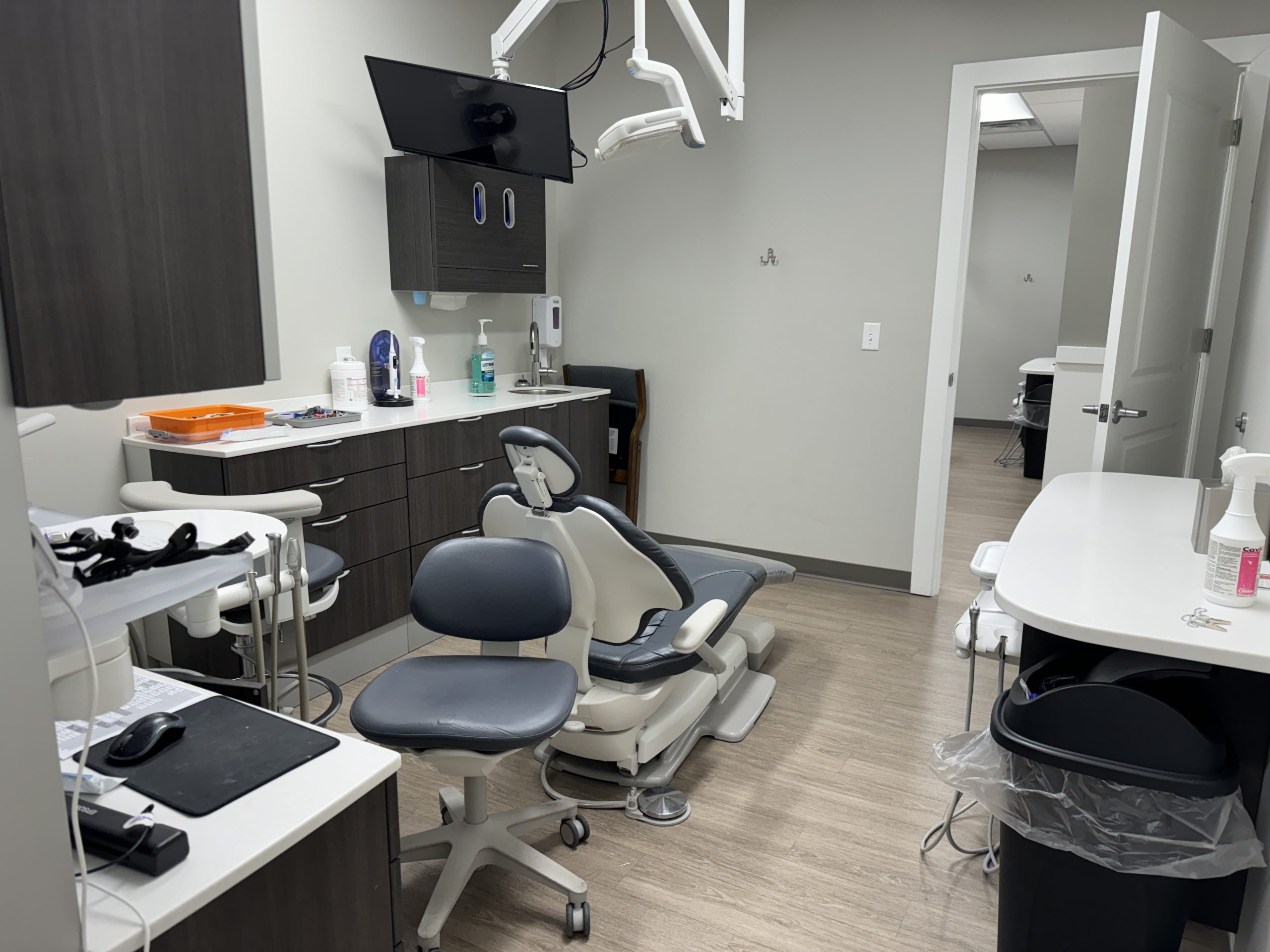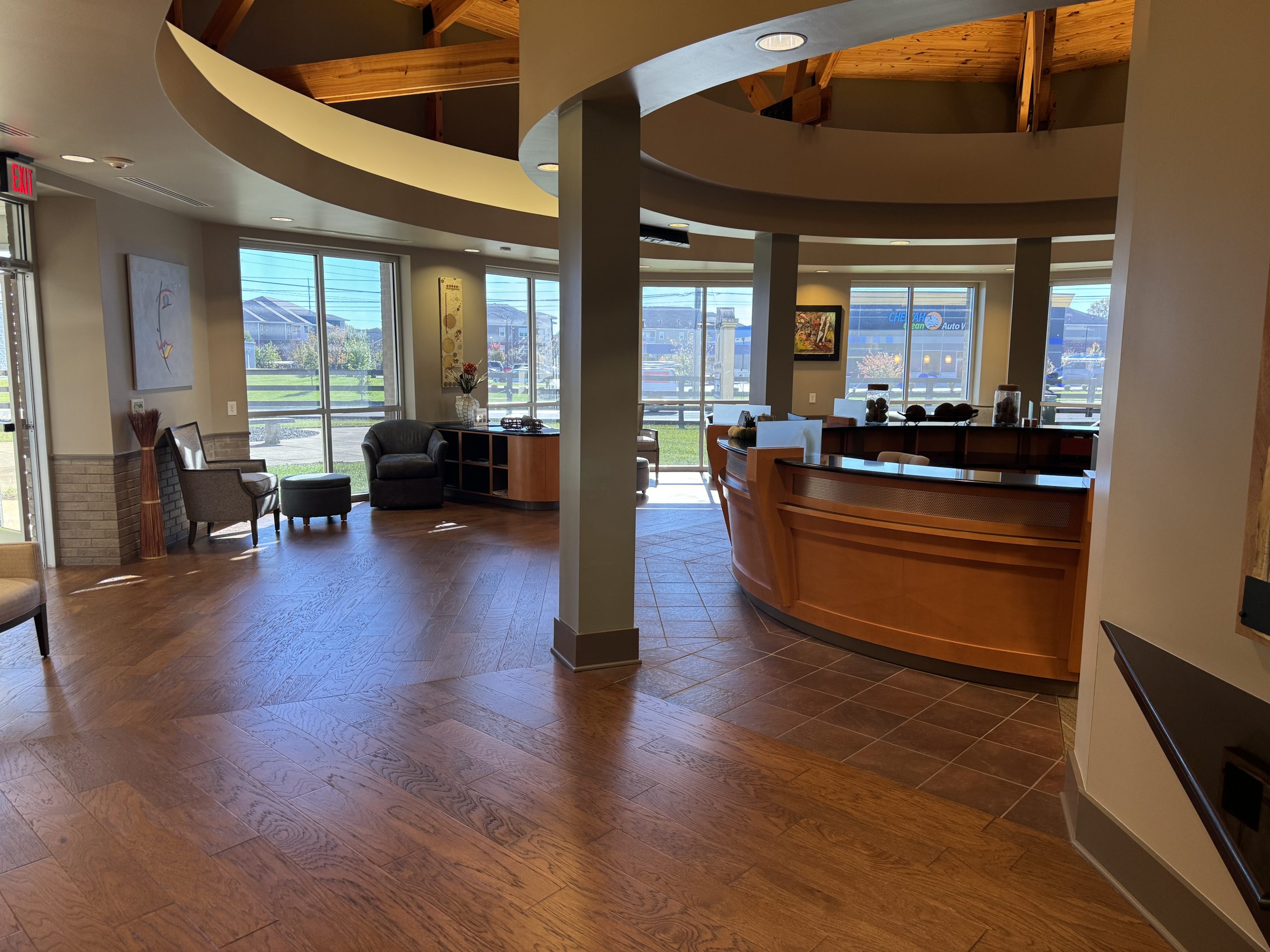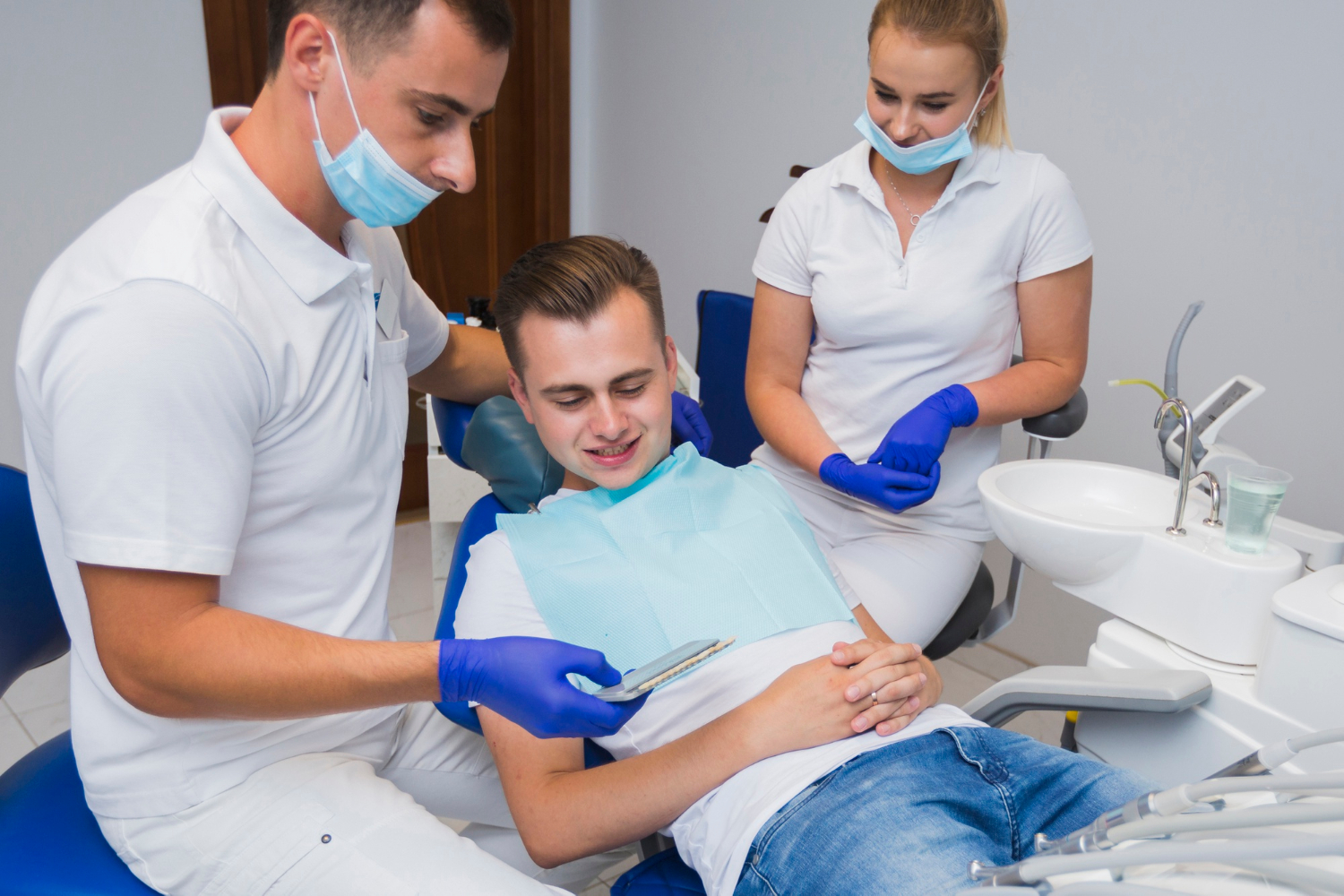Many people in Bowling Green, KY delay or avoid dental visits entirely because of fear, anxiety, or past negative experiences. Sedation Dentistry offers a safe, medically approved solution that allows patients to receive care comfortably and confidently. At Chandler Park Dental Care, sedation-certified dentists — including Dr. Austin Delpont and Dr. Eli Jackson — provide advanced sedation options under strict American Dental Association (ADA) and Kentucky Board of Dentistry regulations.
From mild relaxation with nitrous oxide to deeper IV sedation for longer procedures, today’s sedation methods are tailored to each patient’s health, anxiety level, and treatment plan. This guide explores everything you need to know about sedation dentistry in Bowling Green — including types, safety protocols, costs, recovery, and who qualifies for each method — so you can make informed, confident decisions about your oral health.
Table of Contents
Key Takeaways (TL;DR)
- Safe & regulated: Delivered under ADA/ASA and Kentucky Board of Dentistry rules with continuous monitoring.
- Personalized choices: Nitrous, oral, and IV sedation matched to procedure length, health, and anxiety level.
- Transparent costs: Typical range: nitrous $60–$120, oral $200–$400, IV $500–$1,000+ with financing options.
- Local expertise: Chandler Park’s sedation-certified team serves Bowling Green and Warren County families.
What Is Sedation Dentistry?
Sedation dentistry uses medication to help patients relax during dental procedures. Often called “sleep dentistry,” patients typically remain awake and responsive. The goal is to ease anxiety, minimize discomfort, and create a calm experience for patients who might otherwise avoid care.
The American Dental Association (ADA) defines sedation from minimal to deep. Most Kentucky practices, including Chandler Park Dental Care, safely offer minimal–moderate options (nitrous oxide, oral, and IV) under Kentucky Board of Dentistry guidance.
Unlike general anesthesia, sedation keeps you conscious and breathing on your own while deeply relaxed. You can respond to verbal cues, which improves comfort and safety.
“Sedation allows patients to finally get the care they need—comfortably, safely, and without fear,” explains Dr. Austin Delpont, DMD, a sedation-certified provider at Chandler Park Dental Care in Bowling Green.
Types of Sedation Dentistry (Nitrous, Oral & IV)
Chandler Park Dental Care provides three primary options for patients in Bowling Green, KY. Depth and duration vary, allowing your dentist in Bowling Green, KY to match the approach to your needs and health status.
Nitrous Oxide (Laughing Gas)
Nitrous oxide is inhaled through a small mask. It produces calm within minutes, and wears off quickly when the mask is removed—often allowing patients to drive themselves afterward. It’s a trusted first-line option supported by the AAPD and ADA.
Oral Sedation
Oral sedation uses a prescription (e.g., diazepam, triazolam) taken before the visit. It provides deeper relaxation; patients are drowsy yet responsive. A companion must drive you home.
IV Sedation
Intravenous (IV) sedation offers the deepest level of conscious sedation in-office. Medication is delivered into the bloodstream for precise control. Patients are conscious but often amnesic to sounds and time.
At Chandler Park, Dr. Austin Delpont and Dr. Eli Jackson are certified by the Kentucky Board of Dentistry under 201 KAR 8:550. Continuous monitoring (pulse oximetry, oxygen, blood pressure) is standard in every case.
Who Benefits from Sedation Dentistry?
Sedation helps patients with dental anxiety or past trauma, low pain thresholds, strong gag reflexes, complex treatment plans, pediatric/special needs, or movement disorders. It improves cooperation and outcomes, preventing avoidance-driven oral health decline in Bowling Green.
- Dental anxiety or phobia — calm, controlled experience.
- Low pain tolerance — greater comfort for sensitive procedures.
- Strong gag reflex — easier impressions and posterior work.
- Complex/long treatments — combine care in fewer visits.
- Pediatric & special needs — AAPD supports nitrous/minimal oral protocols.
Safety Protocols & Licensing in Kentucky
Kentucky Licensing & Permitting
Under 201 KAR 8:550, dentists performing moderate/deep sedation must hold active permits, complete continuing education, and maintain inspected equipment. Chandler Park adheres to KBD, ADA, and ASA standards.
- CPR/BLS/ACLS for clinical staff; routine emergency drills.
- Monitoring — pulse oximetry, oxygen, blood pressure, suction.
- Preparedness — reversal agents on site (e.g., flumazenil, naloxone).
- Pre-procedure screening — ASA classification, medical clearances.
ADA & ASA Guidance
The ADA’s sedation guidelines and the ASA physical status scale (I–VI) inform candidacy. Most in-office cases are ASA I–III to ensure safety.
Risks, Contraindications, and Precautions
Common, Mild Effects
- Drowsiness or fatigue
- Dry mouth or light dizziness
- Brief memory lapses
- Occasional nausea
Rare Complications
- Over-sedation or delayed recovery
- Allergic reactions
- Respiratory compromise in high-risk patients
- Temporary blood pressure/oxygen changes
Medical Considerations
Special evaluation may be needed for sleep apnea, uncontrolled cardiovascular disease, hepatic/renal disease, pregnancy, certain psychiatric conditions/MAOIs, and medication allergies.
Cost of Sedation Dentistry in Bowling Green, KY
Average Local Costs
Insurance, Codes & Financing
Coverage varies and may require medical necessity. Common CDT codes include D9222, D9223, and D9248. Chandler Park supports pre-authorizations and offers DenVantage and CareCredit to improve access.
Preparing for a Sedation Appointment
Pre-Appointment Review
Complete medical history, medication review, and ASA classification determine candidacy. Some patients may need physician clearance.
Fasting & Medications
- No food/drink 6–8 hours for oral/IV sedation.
- Take regular medications only as directed.
- Avoid caffeine/alcohol/recreational substances 24 hours prior.
- Wear comfortable clothing; avoid nail polish/lipstick (sensor accuracy).
Transportation & Post-Care
A responsible adult must drive you home and stay for several hours after oral/IV sedation. Nitrous patients typically resume normal activities the same day.
What to Expect During the Procedure
Arrival & Setup
- Vitals and baseline readings are recorded.
- Monitoring equipment applied (pulse oximetry, BP cuff, oxygen as needed).
- Dentist confirms dosage, reviews plan, answers questions.
During Sedation
Oral sedation onset: ~20–40 minutes; IV sedation is nearly immediate; nitrous calms within seconds. Most patients respond to prompts yet remember little afterward. Monitoring is continuous per ADA/ASA guidance.
Emergency Readiness
Emergency oxygen, suction, and reversal agents (e.g., flumazenil, naloxone) are onsite; staff maintain BLS/ACLS.
Recovery and Aftercare
Immediate Recovery
- Nitrous: Wears off within minutes; driving typically permitted.
- Oral: Drowsiness may last 4–6 hours; rest and hydrate.
- IV: Allow several hours; avoid driving/decisions for 24 hours.
At-Home Guidance & When to Call
Have an escort stay until you’re fully alert. Avoid alcohol/strenuous activity the day of treatment. Contact the office for persistent dizziness, breathing trouble, unusual bleeding/swelling, or allergic symptoms.
Sedation Dentistry vs. General Anesthesia
Financing, Insurance & Accessibility
Chandler Park Dental Care aims to make comfortable care accessible to everyone. Options include the DenVantage Membership Plan, CareCredit, and flexible in-office arrangements. The practice is wheelchair accessible and supports seniors and patients with sensory needs.
Community care: The annual Smiles from the Heart event provides free services for uninsured Warren County residents.
Frequently Asked Questions
Is sedation dentistry safe in Kentucky?
Yes. It’s regulated by the Kentucky Board of Dentistry; providers hold permits, complete continuing education, and use state-inspected monitoring equipment.
Will I feel pain or remember anything?
Most patients feel little to no discomfort. Many remember little or nothing afterward, depending on the sedation type.
Can children receive sedation?
Yes. Nitrous oxide is safe when administered by trained professionals following age-appropriate protocols recognized by the AAPD.
Does insurance cover sedation?
Coverage varies. Some plans cover sedation when medically necessary for surgery (e.g., extractions, implants). Pre-authorization is recommended.
How long is recovery?
Nitrous wears off quickly; oral and IV sedation may require several hours. Follow written aftercare and expect a next-day check-in.
Why Bowling Green Patients Trust Chandler Park Dental Care
- Certified sedation providers — Dr. Austin Delpont and Dr. Eli Jackson hold oral and IV permits under 201 KAR 8:550.
- Experienced clinical team — restorative, implant, and Invisalign expertise.
- Advanced monitoring — digital imaging, pulse oximetry, modern safety systems.
- Community commitment — annual outreach for uninsured residents.
Schedule Your Sedation Consultation
Ready for comfortable, stress-free dentistry? Schedule a personalized consultation. The team will review your medical history, explain options, and design a plan for you.
📍 Address: 1857 Tucker Way, Bowling Green, KY 42104
📞 Phone: (270) 781-2952
🌐 Website: ChandlerParkDentalCare.com
🕓 Hours: Mon 8 AM–7 PM | Tue–Wed 7 AM–5 PM | Thu 8 AM–7 PM | Fri 8 AM–1 PM
About the Authors
Dr. Austin Delpont, DMD — University of Louisville School of Dentistry graduate; certified in oral and IV sedation; licensed by the Kentucky Board of Dentistry (201 KAR 8:550). Member of the ADA and ADSA.
Dr. Eli Jackson, DMD — Practicing in Bowling Green since 1982 with restorative, implant, and sedation experience. Known for calm chair-side care for generations of local families.
This article aligns with ADA, ASA, and Kentucky regulatory standards.



